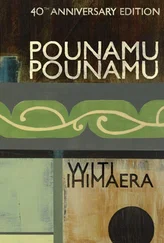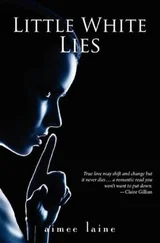It was time for her to leave her hearth.
She carefully selected the medicines, unguents, potions, analgesics, antiseptics, styptics, philtres, emetics, blood purifiers and ointments that she needed. She took only kao, dried kumara and water as provisions; food would be her payment from her patients and, should she require extra kai for herself and her animals, the Lord and the land provided. She knew all the traditional food-gathering areas — fern grounds, pa tuna, taro and kumara gardens and bird sanctuaries — and, as well, she had some special secret areas where she went to stock up on herbs and healing plants.
Paraiti took a small tent and a bedroll. For protection she put her rifle in a sling and a knife in her left boot. Although she might not be attractive, she was still a woman, and men were men.
She went to Rongopai, the great cathedral of her people, and in its stunning interior — verily a Garden of Eden — she prayed to God for safe passage. She filled five blue bottles with the healing waters that bubbled up from a deep underground spring behind the house, and sprinkled herself and her animals with the water. Then she strapped the saddlebags around Kaihe’s girth, bridled and saddled Ataahua, tapped on his front knees and climbed aboard. Straightaway, she urged Ataahua up, ‘Timata,’ and headed into the foothills behind Waituhi.
A day’s travel took her to the boundary between the lands of Te Whanau a Kai and Tuhoe, and there she sought Rua’s Track, one of the great horse tracks joining the central North Island to the tribes of Poverty Bay in the east. She followed the track up the Wharekopae River, through Waimaha by way of the Hangaroa Valley to Maungapohatu. The only people who travelled the track were Maori like herself; sometimes they were families but most often they were foresters, labourers or pig hunters.
On her third day, however, Paraiti joined a wagon-train of some forty members; they, too, were making for Ruatahuna. They knew who she was and were honoured to have her join them. And she, in turn, valued the opportunity to sharpen up her social skills, to share a billy of manuka tea and flat bread, to spend time playing cards and to korero with some of the old ones about the way the world was changing. But they made slow progress, so Paraiti took her leave of them and journeyed on alone.
And now, Ruatahuna lay ahead.

As she approaches Ruatahuna, Paraiti knows she will be late for the service. She can hear the bell ringing at the meeting house, Te Whai a Te Motu, calling the Ringatu faithful to gather together on this very special day. The First of June in the church calendar is the Sabbath of the Sabbath, as written in Leviticus 23:4: ‘Ko nga hakari nunui enei a Ihowa, ko nga huihuinga tapu e karangatia e koutou i nga wa e rite ai.’ It is also the beginning of the Maori New Year, with the pre-dawn heliacal rising of Matariki, the bright stars of fruitfulness. On this happy day, each person contributes seeds to the mara tapu, the sacred garden. This is part of the huamata ritual, for out of the old seed comes the new plant, symbolic of the renewal of God’s promise to all his people.
Paraiti urges Ataahua quickly through the village. Some of the local dogs bark at them, and Paraiti gives Tiaki a warning glance, ‘Don’t bark back, it’s Sunday.’ He gives her a sniffy look, then growls menacingly at the dogs so that they whine and back away. Ahead, Paraiti sees her cousin Horiana’s house. She knows Horiana won’t mind if she ties the animals to her fence. ‘Don’t eat Horiana’s roses,’ she tells Kaihe. Even so, she is troubled to see that the roses are taking over the native vines in the garden.
Wrapping her scarf around her face, and taking with her a small sachet of seeds, Paraiti makes for the marae. Horses and buggies are tied to the fence outside and, hello, a few motoka as well. Inside, the meeting house is stacked to the gills; people are sitting up against the walls, prayer books in hand. Wirepa, the local poutikanga, pillar of authority, is leading the service.
‘Kororia ki to ingoa tapu,’ he intones. ‘And verily, an angel appeared to the prophet Te Kooti, and the angel was clothed in garments as white as snow, his hair like stars, and he wore a crown and a girdle like unto the setting sun and the rising thereof, and the angel’s fan was like the rainbow and his staff was a myriad hues. And the angel said to Te Kooti, “I will not forsake thee or my people either.” And so we prevail to this very day. Glory be to thy holy name. Amine.’
Paraiti sees Horiana beckoning and making a place beside her. Stooping, she makes her way over to her cousin.
‘E noho, whanaunga,’ Horiana welcomes her. They kiss and hug as if they haven’t seen each other for a thousand years. ‘We’ll korero afterwards,’ Horiana whispers, opening her prayer book.
Paraiti gives a sign of apology to Wirepa for interrupting the service. She hears a buzz as people realise she has arrived: ‘Scarface … Te Takuta … Paraiti … Scarface.’ She smiles at familiar faces. She doesn’t mind that people call her Scarface; they use the name as an identification, not to mock her. She lets herself be absorbed into the meeting house. It is such an honour to be sitting within Te Whai a Te Motu, with its figurative paintings and beautiful kowhaiwhai rafter patterns. Here, in the bosom of this holy place, Paraiti joins in praising and giving thanks to God.
The service adjourns to the mara tapu outside Te Whai a Te Motu. There, Paraiti and others offer their seeds for the sowing. Wirepa intones a final karakia. After the service there are people to be greeted and further korero to be had with the local elders.
After the midday meal, Paraiti sets up her tent in her usual place on the marae. Horiana, who acts as her assistant in Tuhoe, has been taking bookings. ‘Lots of people want to see you,’ she tells her. ‘The usual problems. Nothing too difficult so far.’ Always bossy, Horiana sits outside the tent deciding when clients should enter and depart. Inside, there are three chairs and a bed: a slab of wood covered with a fine woven flax mat. Stacked against one of the walls of the tent are the rongoa and the herbal pharmacy that Paraiti draws on for her work. Not all have been brought by her; some have been stockpiled by Horiana for her arrival. They include kumarahou for asthma; waoriki for arthritis; ake, kareao, miro or rimu gum for bleeding and haemorrhaging; hakekakeha or harakeke roots for blood cleansing and to promote regular blood functions; mingimingi, the mamaku pith and punga fern pith for scrofulous tumours, abcesses and boils; kawakawa for bronchitis and catarrh; weka oil, kowhai and bluegum juice for bruises, sprains and aching bones; harakeke and kauri gum to treat burns; puwha and mimiha gum for mouth and teeth ailments; harakeke for chilblains and bad circulation; houhere and tawa for colds; titoki for constipation; piupiu for cramp; wood charcoal for dandruff; koromiko buds for diarrhoea and dysentery; eel oil for earache; powdered moss for eczema and scabies; kaikaiatua as an emetic; pirita for epilepsy; seaweed for goitre; paewhenua for haemorrhoids; piripiri for urinary health; fernroot and convolvulus roots for lactation; flax leaf juice for sciatica; huainanga as an emetic to expel tapeworms and so on.
On a small table are the surgical implements of her trade. Unlike some of her brother and sister healers, Paraiti shuns Pakeha utensils and keeps to traditional ones: wooden sticks and scrapers, sharp-edged shells and obsidian flakes for cutting, thorns for opening up abscesses, stones to heat before placing on the body, lacy houhere bark and cobwebs as poultices and dressings, palm tree splints for broken bones, kahakaha fibre for bandaging, and various oils for massaging.
Читать дальше













